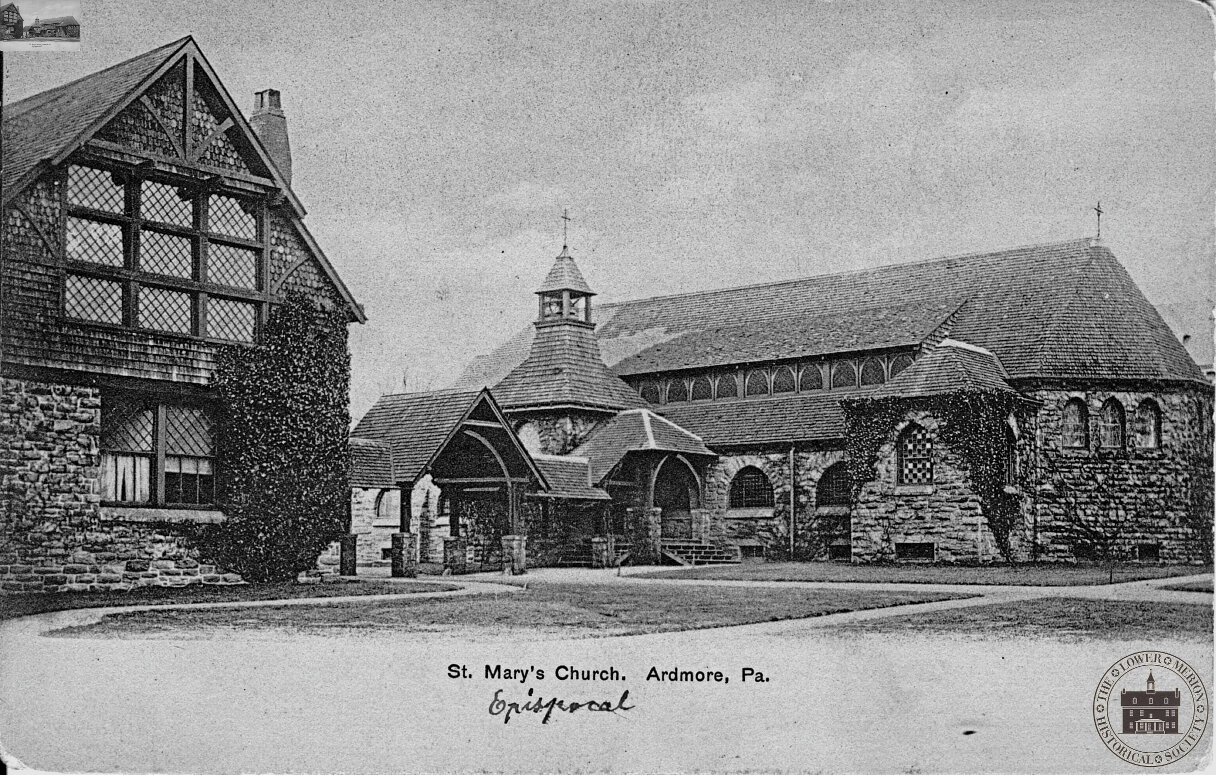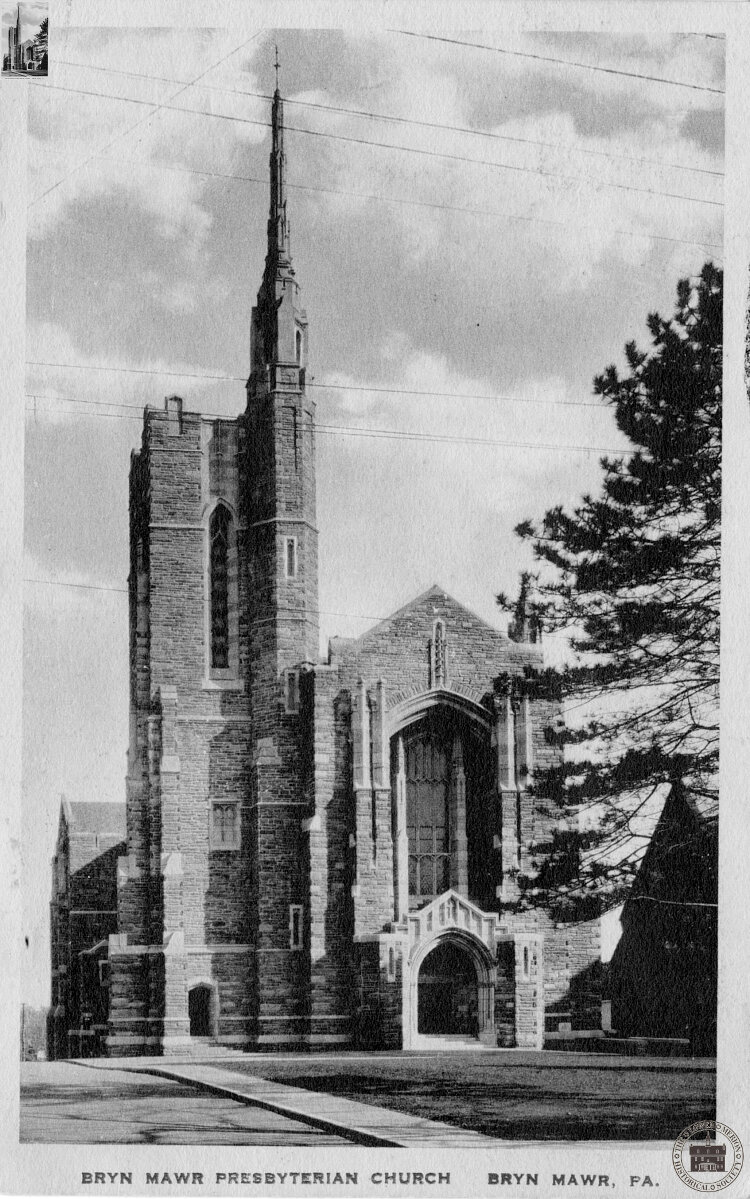Six Houses of Worship

Quaker Meeting House, Merion
The Religious Society of the Friends’ Merion Meetinghouse is a national treasure and the defining building of the community. It has been in continuous use since its construction in 1695. Members of the Society donated most of the materials, from which the building was cobbled together by volunteers and paid laborers over a span of 30 years. Pennsylvania’s European heritage can be traced back to William Penn and his Holy Experiment – freedom from unjust persecution, freedom of religion, and peaceful co-existence. Today, many still view the Meetinghouse as a part and reminder of Penn’s vision and egalitarian values. 2007 was the 325th Anniversary of the founding of the Welsh Tract in America. This simple structure has been designated as a National Register Landmark and is part of a local Historic District.

St. Asaph’s Episcopal, Bala
Modeled after St. Aspah Cathedral in Wales, this Episcopal Church was built amidst farms, close to the Schuylkill Valley spur of the Pennsylvania Railroad and the (still unpaved) City Line Avenue. The first service in the Victorian Gothic building took place on March 24, 1889. When the first rector, Reverend Frederick Burgess, arrived a few months later, the donations collected at his first service were sent to the victims of the recent, devastating Johnstown flood, beginning a long legacy of outreach and good works that continues to this day.

St. Matthias Roman Catholic Church, Bala
To attract developers and residents to this emerging suburban community, the Archbishop of Philadelphia established St. Matthias Parish on February 2, 1906. Seven months later, on October 7, 1906 the cornerstone was laid and work began constructing the church and rectory. Built in the English style of Benedictine and Augustinian monastery churches of the twelfth and thirteen centuries, this picturesque structure is “strong in its foundation, reverent in its atmosphere, and beautiful in its simplicity.”

St. John’s Episcopal Church, Cynwyd
St. John’s is the second oldest Episcopal Church in Lower Merion Township (Church of the Redeemer claims the superlative of being the first). The first service was held on August 6, 1863, while the Civil War was raging. Around the turn of the century, three of the original board and batten church buildings along Levering Mill Road in Bala Cynwyd were replaced with stone buildings, including the church, parish hall, and rectory. Today it is still considered one of the lovelier churches in the area, complete with the stained glass windows, which were made by Nicola D’Ascenzo Studios of Philadelphia and Hardman Studios of Birmingham, England.

St. John’s Episcopal Church, Cynwyd
(see previous caption)

Holy Trinity Evangelical Lutheran Church, Narberth
This Lutheran community was established on January 15, 1922. The newly formed congregation of 90 first met at the YMCA in Narberth but cramped conditions led to the decision to construct the current edifice at the southeast corner of Woodbine and Narberth Avenues. Ground was broken in the spring of 1924; the church was formally dedicated on May 24, 1925. The building was expanded in the late 1940s.

St. Margaret’s Roman Catholic Church, Narberth
St. Margaret’s Roman Catholic Church was established in 1900. An elementary school building on Forrest Ave, Narberth, was added in 1926. A new school and parking lot were built across the street from the church. With the closing of many parish schools, St. Margaret Elementary School draws pupils from seven parishes. A centennial book was published in 2000.

St. Paul’s Lutheran Church, Ardmore
Established by early German immigrants in 1769, St. Paul’s was a log country church for 60 years. In 1833 a new location was selected and a new church built near the Ardmore town center on Lancaster Pike west of Church Road. At this time, the church assumed the corporate name of “The Evangelical Lutheran Congregation of Saint Paul’s Church.” The church was re-located again in 1941 to Argyle and Wynnewood Roads. The Luther Parsons Bell Tower erected in 1957.

St. Coleman’s Roman Catholic Church, Ardmore
Saint Colman’s Roman Catholic Church was founded in 1907. Ardmore, which derived its name from a town in County Waterford in southern Ireland, had a large Irish population at that time. Reverend James J. Carton, an Irish immigrant, was appointed the first rector. The school opened in 1915 under the direction of the Sisters of Saint Joseph from Chestnut Hill. The present church building was completed in 1926.

Mount Calvary Baptist Church, Ardmore
In the late 19th century, as a burgeoning African American community was taking root in Lower Merion, parishioners of a local white Baptist church, located at Lancaster Avenue and Woodside, invited them to share their facilities. From 1875 to 1893, black and white families attended services together, and their children were educated side by side at the Sunday school. However, as the African American community grew, plans were made to found separate institutions: the first was Zion Baptist Church, chartered in 1894. Mount Calvery Baptist, also in Ardmore, was organized at the home of Mrs. Flora Woodson of Simpson Road in January of 1906. Within in the few decades, the community had erected a church and a Sunday school, as well as several successful social programs. Pictured is one of the Sunday school classes of 1956.

St. Mary’s Episcopal Church, Ardmore
Located on Ardmore Avenue, a block off Lancaster Ave, St. Mary’s Episcopal Church was designed by architects Furness and Evans and constructed in 1887. In 1895 a laundry, also named St. Mary’s, was established by the parish to create jobs for women. The personal image on the back reads, “Yes dear. I know I’m handsome.” Printed in Germany.

Bryn Mawr Presbyterian Church, Bryn Mawr
Bryn Mawr Presbyterian Church had its informal beginning in January 1873 in the Temperance Hall on Lancaster Pike. The group soon after purchased a larger piece of real estate on Montgomery Avenue, where the church stands to this day. Bryn Mawr Presbyterian’s first pastor, the Reverend William H. Miller, came to the parish in 1874 and stayed for thirty-three years, helping to build the church in 1886.

Church of the Redeemer, Bryn Mawr
The Church of the Redeemer (Episcopal) in Bryn Mawr was established in 1851. The parish’s first church, at Lancaster and Buck Lane, is no longer standing. In 1879-81 a new church, designed by Charles M. Burns, Jr., with “Chancel and Tower in the Gothic Style of Architecture” was built at Pennswood and New Gulph Roads to serve the Main Line parishioners. The parish complex sits on eleven acres of land that includes the church, the churchyard, a parsonage, a memorial garden, and cemetery, which give testimony to the enduring appeal of familiar architectural forms in a tranquil setting.

Good Shepherd Church, Rosemont
The Church of the Good Shepherd was built in 1893 with funds in memoriam to Augusta Graham French, whose husband was a partner in the successful pharmaceutical company Smith, Kline, French. Since 1989, Good Shepherd has been affiliated with the Episcopal Synod of America – a.k.a. Forward in Faith.
